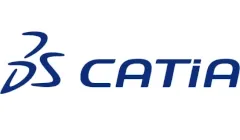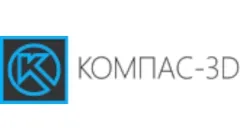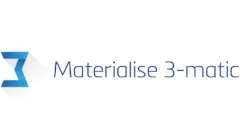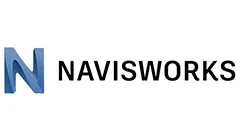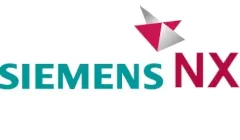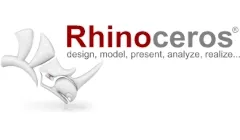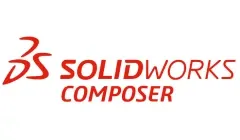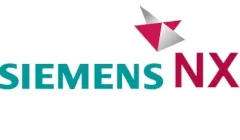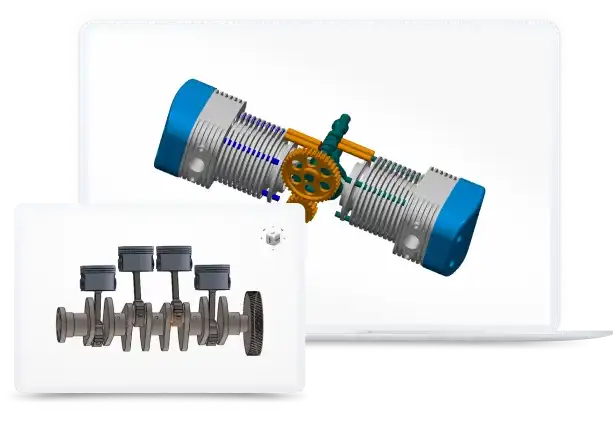
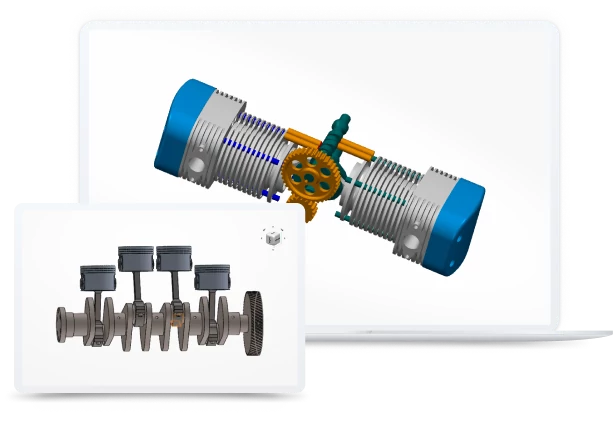
What is VRML (Virtual Reality Modeling Language) file and how to open it?
Applications for end-users. SDK's and tools for software developers. Custom development services for businesses.
Trusted by industry leaders







Available in CAD Exchanger Products
 CAD Exchanger Lab
CAD Exchanger Lab
Desktop app to view, explore and convert 3D CAD data across 30+ file formats
Learn more

What is VRML format?
VRML (Virtual Reality Modeling Language) was originally known before 1995 as the Virtual Reality Markup Language. It is a standard file format for representing 3-dimensional (3D) interactive vector graphics, designed particularly with the World Wide Web in mind.
VRML is a text file format where, e.g., vertices and edges for a 3D polygon can be specified along with the surface color, UV mapped textures, shininess, transparency, and so on. URLs can be associated with graphical components so that a web browser might fetch a webpage or a new VRML file from the Internet when the user clicks on the specific graphical component. Animations, sounds, lighting, and other aspects of the virtual world can interact with the user or may be triggered by external events such as timers. A special Script Node allows the addition of program code (e.g., written in Java or ECMAScript) to a VRML file.
VRML files are commonly called "worlds" and have the *.wrl extension (for example island.wrl). VRML files are in plain text and generally compress well using gzip, useful for transferring over the internet more quickly (some gzip compressed files use the *.wrz extension). Many 3D modeling programs can save objects and scenes in VRML format.
Convert VRML
files
Need to work with CAD files in numerous formats? No worries.
Convert VRML files across 30+ other 3D formats.
How To Import (Read) and Export (Write) VRML files
Import (Read) VRML files
Convert VRML (.wrl) to 3D PDF (.pdf)Convert VRML (.wrl) to ACIS (.sat, .sab)Convert VRML (.wrl) to Open CASCADE (.brep)Convert VRML (.wrl) to Collada (.dae)Convert VRML (.wrl) to DXF (.dxf)Convert VRML (.wrl) to FBX (.fbx)Convert VRML (.wrl) to glTF (.gltf, .glb)Convert VRML (.wrl) to IFC (.ifc)Convert VRML (.wrl) to IGES (.igs, .iges)Convert VRML (.wrl) to JT (.jt)Convert VRML (.wrl) to OBJ (.obj)Convert VRML (.wrl) to Parasolid (.x_t, .x_b)Convert VRML (.wrl) to Rhino (.3dm)Convert VRML (.wrl) to STEP (.stp, .step)Convert VRML (.wrl) to STL (.stl)Convert VRML (.wrl) to U3D (.u3d)Convert VRML (.wrl) to USD (.usd, .usda, .usdc, .usdz)Convert VRML (.wrl) to X3D (.x3d)Export (Write) VRML files
Convert 3D PDF (.pdf) to VRML (.wrl)Convert 3DS (.3ds) to VRML (.wrl)Convert CATIA V6 (3D XML) (.3dxml) to VRML (.wrl)Convert 3MF (.3mf) to VRML (.wrl)Convert ACIS (.sat, .sab) to VRML (.wrl)Convert Open CASCADE (.brep) to VRML (.wrl)Convert CATIA V5 (.CATPart, .CATProduct) to VRML (.wrl)Convert Collada (.dae) to VRML (.wrl)Convert PTC Creo (.prt, .asm) to VRML (.wrl)Convert DWG (.dwg) to VRML (.wrl)Convert DXF (.dxf) to VRML (.wrl)Convert FBX (.fbx) to VRML (.wrl)Convert glTF (.gltf, .glb) to VRML (.wrl)Convert IFC (.ifc) to VRML (.wrl)Convert IGES (.igs, .iges) to VRML (.wrl)Convert Inventor (.ipt, .iam) to VRML (.wrl)Convert JT (.jt) to VRML (.wrl)Convert Siemens NX (.prt) to VRML (.wrl)Convert OBJ (.obj) to VRML (.wrl)Convert Parasolid (.x_t, .x_b) to VRML (.wrl)Convert PLY (.ply) to VRML (.wrl)Convert PRC (.prc) to VRML (.wrl)Convert Revit (.rvt) to VRML (.wrl)Convert Rhino (.3dm) to VRML (.wrl)Convert Solid Edge (.asm, .par, .psm) to VRML (.wrl)Convert SOLIDWORKS (.sldprt, .sldasm) to VRML (.wrl)Convert STEP (.stp, .step) to VRML (.wrl)Convert STL (.stl) to VRML (.wrl)Convert U3D (.u3d) to VRML (.wrl)Convert X3D (.x3d) to VRML (.wrl)What Our Delighted Customers Say
From Our Blog

Everything you need to know about CAD file formats
A CAD file is an output of a CAD software, containing key information about the designed object: its geometry and topology representation, 3D model hierarchy, metadata, and visual attributes depending on the format of the file.
Read more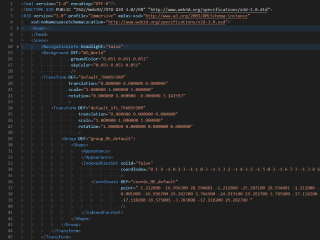
3D formats overview: VRML and X3D
In the seventh part of the series, we explore two open formats aimed at putting 3D data on the web, which found use in the CAD space
Read more
Integration with UNIGINE engine
This article explores the integration possibilities with the UNIGINE engine, a powerhouse in the realm of virtual simulation and game development. Learn how it can be used in applications built with the UNIGINE engine to import CAD and 3D models.
Read more